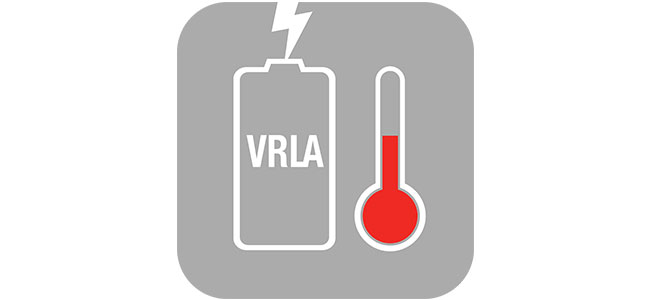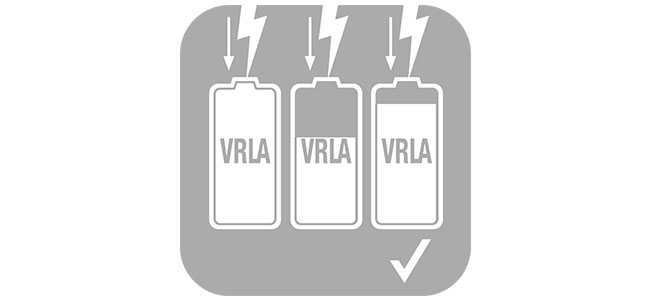VRLA Battery Performance
Understanding standard battery performance and UPS runtime can help alert you of signs of a problem.
VRLA Battery Performance
Understanding standard battery performance and UPS runtime can help alert you of signs of a problem.
Battery performance is of utmost importance to ensure your uninterruptible power supply operates as expected when called into action. Although mission critical applications are increasingly upgrading to lithium ion batteries, VRLA has been the traditional backup energy storage solutions for so long - and their install base is still prominent. Therefore, it's important to grasp some basics regarding factors that affect VRLA battery performance, as well as how best to assure your batteries are in good working order.
Part of maintaining battery performance is regular service and maintenance. Mitsubishi Electric provides battery maintenance, monitoring and replacement. After brushing up on battery basics and the factors impacting performance and lifetime, learn more about our UPS battery services to see how we can support your business.

Expected Lifetime
The typical design life of VRLA batteries used to backup UPS systems is 10 years. However, a battery's actual service life is usually only 3-5 years, where end of life is commonly defined as the point in time when a battery can only be charged to 80% of its rated capacity.
Batteries naturally lose capacity over time, so while stated battery lifetime is 10 years, you may experience less. In addition, multiple factors can adversely affect battery performance and shorten their lifespan further, which are discussed below.

Temperature
VRLA battery manufacturers commonly recommend that battery temperature be maintained at a temperature not to exceed 77° F (25° C). An increase in battery temperature will reduce total battery life. Adequate cooling and ventilation play a vital role in maintaining ambient battery temperature at an acceptable level.
Proper battery cabinet design and relative proximity of batteries are considerations in allowing sufficient air circulation within the cabinet and preventing thermal runaway.

Cycling & Depth of Discharge
VRLA batteries can accommodate a finite number of discharge cycles, depending on the depth, duration, and the load being carried at the time of discharge.
Batteries can sustain many more short and shallow battery cycles than long or deep discharges. An excessive amount of the latter will negatively influence the life of a battery.

Overcharging & Undercharging
VRLA batteries should be maintained at a float voltage less than the maximum established by the manufacturer. An excessively high float voltage can cause accelerated corrosion of the battery plates.
Overcharging on a continual basis will lead to heightened degradation and can even lead to thermal runaway. Undercharging can be harmful as well, because it makes the battery work harder and shortens its life.
If you monitor your battery cycles, temperature and charge levels, you may be able to extend battery performance and UPS runtime before a replacement is needed. However, this requires careful and timely monitoring and maintenance – including expert recommendations on when to replace or upgrade batteries. Mitsubishi Electric can help; our battery maintenance ensures your system keeps running at optimal performance.
Don't Let Your Business Go Dark®